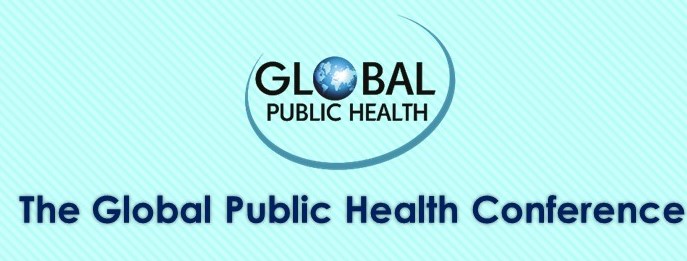MERCURY POISONING ON GOLD MINERS AT ARTISANAL AND SMALL-SCALE GOLD MINING IN INDONESIA:A SYSTEMATIC REVIEW
DOI:
https://doi.org/10.17501/globeheal.2018.1102Keywords:
mercury poisoning, gold miners, artisanal and small-scale gold miningAbstract
Mercury (Hg) is a natural element that can be found in air, water and soil. However, various activities may increase mercury levels including artisanal and small-scale gold mining (ASGM) activities. Mercury is toxic and persistent that it can harm humans and the environment. The use of mercury in ASGM process can have negative effects on gold miners, one of which is mercury poisoning. Therefore, it is important to know what factors are related with the occurrence of mercury poisoning on gold miners at ASGM. Beside that, there are many studies on mercury poisoning in Indonesia. This research is a systematic review of 5 eligible research journals conducted in the year 2000-2017 in Indonesia. Journals are obtained from Science Direct, Google Scholar and Portal Garuda databases. Factors that are often researched in these studies are age, nutritional status, working hours per day, working frequency per week, working period (years), mercury levels used per day, the use of Personal Protective Equipment (PPE), and fish consumption. Based on a systematic study, most journal finds that the hours worked per day, working frequency per week, working period (years), and the use of PPE are significantly related to mercury poisoning. While, age, nutritional status, mercury levels used per day, and fish consumption have no statistically significant relationship with the occurrence of mercury poisoning on gold miners at ASGM in Indonesia.
Downloads
References
Asiah, N., Alfian, Z., Anwar, J., Siregar, Y., & Bangun, D. (2015). Pengaruh Lama Kerja terhadap Kadar Merkuri (Hg) dalam Urin pada Pekerja Tambang Emas (Studi Kasus di Desa Panton Luas Kecamatan Sawang Kabupaten Aceh Selatan). Jurnal Pendidikan Kimia, 7(2), 7–12.
Darmono. (2009). Farmasi Forensik dan Toksikologi. UI Press.
Gohari, H. (2016). New Method for Determination of Mercury in Contaminated Water by using Nano Composite Carbon Paste Electrode. Austin Journal of Analytical and Pharmaceutical Chemistry, 3(4).
Mensah, E. K., Afari, E., Wurapa, F., Sackey, S., Quainoo, A., Kenu, E., & Nyarko, K. M. (2016). Exposure of Small-Scale Gold Miners in Prestea to Mercury, Ghana, 2012. The Pan African Medical Journal, 25(Supp 1), 6. https://doi.org/10.11604/pamj.supp.2016.25.1.6171
Palar, H. (1994). Pencemaran dan Toksikologi Logam Berat. Jakarta: Rineka Cipta.
Petasule, S. (2012). Faktor-faktor yang Berhubungan dengan Kejadian Keracunan Merkuri pada Pemijar dan Pengolahan Emas di Tambang Emas Desa Hulawa Kecamatan Sumalata Timur Kabupaten Gorontalo Utara Tahun 2012. Public Health Journal Universitas Gorontalo, 1–10.
Rianto, S., Setiani, O., & Budiyono. (2012). Analisis Faktor-Faktor Yang Berhubungan dengan Keracunan Merkuri Pada Penambang Emas Tradisional di Desa Jendi Kecamatan Selogiri Kabupaten Wonogiri, 11(1), 54–60.
Sembel, D. T. (2015). Toksikologi Lingkungan. Yogyakarta: Andi Offset.
Setiyono, A., & Djaidah, A. (2012). Konsumsi Ikan dan Hasil Pertanian terhadap Kadar Hg Darah. Jurnal Kesehatan Masyarakat, 7(1), 110–116. https://doi.org/http://dx.doi.org/10.15294/kemas.v11i1.3467
Siswanto. (2010). Systematic Review Sebagai Metode Penelitian Untk Mensintesis Hasil-Hasil Penelitian. Buletin Penelitian Sistem Kesehatan, 13(4), 326–333.
Sousa, R. N., Veiga, M. M., Klein, B., Telmer, K., Gunson, A. J., & Bernaudat, L. (2010). Strategies for Reducing The Environmental Impact of Reprocessing Mercury-Contaminated Tailings in The Artisanal and Small-Scale Gold Mining Sector: Insights from Tapajos River Basin, Brazil. Journal of Cleaner Production, 18(16–17), 1757–1766. https://doi.org/10.1016/j.jclepro.2010.06.016
Sumantri, A., Laelasari, E., Junita, N. R., & Nasrudin. (2014). Logam Merkuri pada Pekerja Penambangan Emas Tanpa Izin. Jurnal Kesehatan Masyarakat Nasional, 8(8), 398–403.
Telmer, K., & Stapper, D. (2012). Reducing Mercury Use in Artisanal and Small-scale Gold Mining - A Practical Guide. United Nations Environment Programme.
United Nations Environment Programme. (2008). Guidance for Identifying Populations at Risk from Mercury Exposure. Geneva: World Health Organization.
United Nations Environment Programme. (2015). Developing a National Action Plan to Reduce, and Where Feasible, Eliminate Mercury Use in Artisanal and Small Scale Gold Mining: Working Draft. Geneva: World Health Organization.
Wardiyatun, S., & Hartini, E. (2009). Faktor-faktor yang Berhubungan dengan Kadar Merkuri dalam Urine pada Pekerja Tambang Emas di Desa Rengas Tujuh Kecamatan Tumbang Titi Kabupaten Ketapang Kalimantan Barat. Jurnal Visikes, 8(2), 132–142.
Widowati, W., Sastiono, A., & Jusuf R, R. (2008). Efek Toksik Logam. Yogyakarta: Andi Offset.
World Health Organization. (2017). Mercury and Health. Retrieved from http://www.who.int/mediacentre/factsheets/fs361/en/
Downloads
Published
How to Cite
Issue
Section
License
Copyright (c) 2018 Arinil Haq, Umar Fahmi Achmadi

This work is licensed under a Creative Commons Attribution 4.0 International License.






